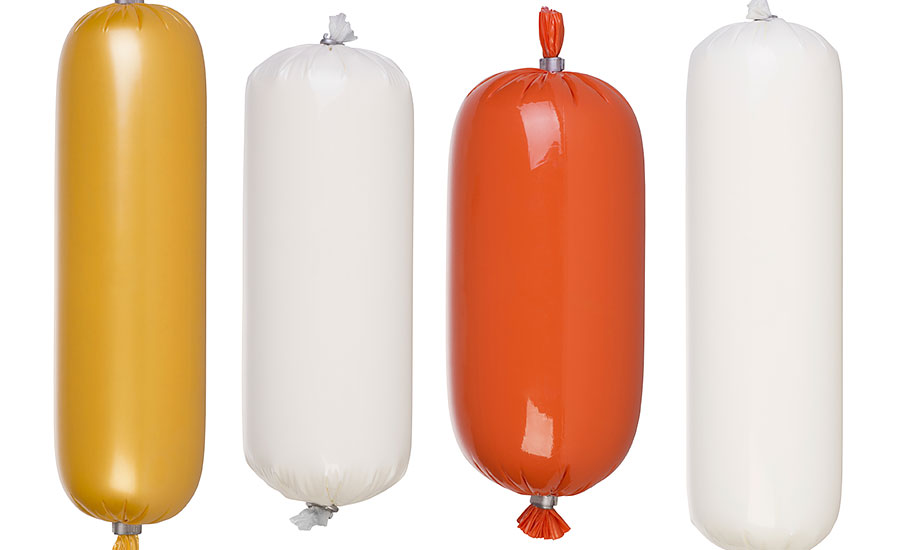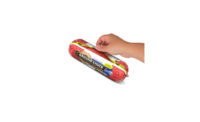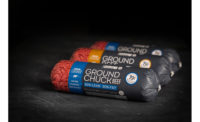Although it dates from the 1940s, chub packaging remains a favorite for pumpable products such as ground beef, ground turkey, sausage, chorizo, salami, taco meat and pet food.
What’s not to like about the product-filled film tube with clips on either end? The cylindrical package combines economy, convenience and shelf life in a case-ready format. Significantly lighter in weight than tray-based packaging, the chub reduces packaging material and transportation costs. As a source-reduced, lightweight package it also scores points for sustainability.
Available in a variety of sizes, the film can be marked with cut points to help divide portions for preparation or freezing. Chub packs also can be equipped with easy-opening features. Common chub sizes include 1-, 2-, 3-, 5- and 10-pound, but heavier weights are readily available.
Printed or unprinted film is used for chub packaging. Films used include monolayer polyethylene (PE) and higher barrier polyvinylidene chloride, multilayer nylon/PE, PE/foil/PE and PE/polyethylene terephthalate/PE. Depending on the film’s barrier properties, chubs can offer longer shelf life than overwrapped tray packs. For example, unopened ground beef chubs from Cargill Meat Solutions, in Wichita, Kan., offer a refrigerated shelf life up to 21 days and are compatible with up to six months of freezer storage without rewrapping.
Chub packaging equipment can be semi-automatic or fully automated. Automated chub packaging begins with rollstock. Flat film is fed around a cylinder and sealed longitudinally via hot air, radio frequency, extrusion or cohesive to form a continuous tube. A pump fills the tube with product. When the appropriate fill volume is reached, rollers compress the tube to squeeze product away from the clipping area so the film can be gathered for clip application. Clips can be pre-formed or produced on demand from less expensive rollstock. Clips are applied in pairs, one at the trailing end of one package and one at the leading end of the next package. After clips are applied, a knife cuts between the clips to separate individual chubs. Options include coders, print registration and a loop applicator to enable hanging display.
Finished chubs are loaded into cases. Until recently, case loading has been a manual process; however, at least one automated machine now exists. In this system, one or two delta robots perform the case-loading function and combine a compact footprint with sanitary design. An easy-to-clean end-of-arm tool, or end effector, on the robot(s) needs no tools to changeover and features an integrated vacuum system to generate suction and eliminate the need for an external pump or blower.
Speed varies depending on chub size, weight and pack pattern, but up to 200 chubs per minute can be moved by the dual-robot configuration and continuous-motion case transport. A specially designed picking conveyor handles any size chub and prevents it from rolling out of position. The highly flexible machine handles chub diameters from 2 to 4.5 inches, lengths from 4 to 24 inches and weights from 8 ounces to 10 pounds. Changeover involves three steps: selection of recipe on the operator interface; adjustment of case guides; and change of the end-of-arm tool.



